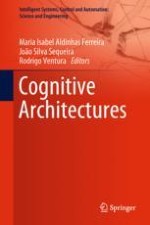This book provides an integrated framework for natural and artificial cognition by highlighting the fundamental role played by the cognitive architecture in the dialectics with the surrounding environment and consequently in the definition of a particular meaningful world.
This book is also about embodied and non-embodied artificial systems, cognitive architectures that are human constructs, meant to be able to populate the human world, capable of identifying different life contexts and replicating human patterns of behavior capable of acting according to human values and conventions, systems that perform tasks in a human-like way.
By identifying the essential phenomena at the core of all forms of cognition, the book addresses the topic of design of artificial cognitive architectures in the domains of robotics and artificial life. Moving from mere bio-inspired design methodology it aims to open a pathway to semiotically determined design.
